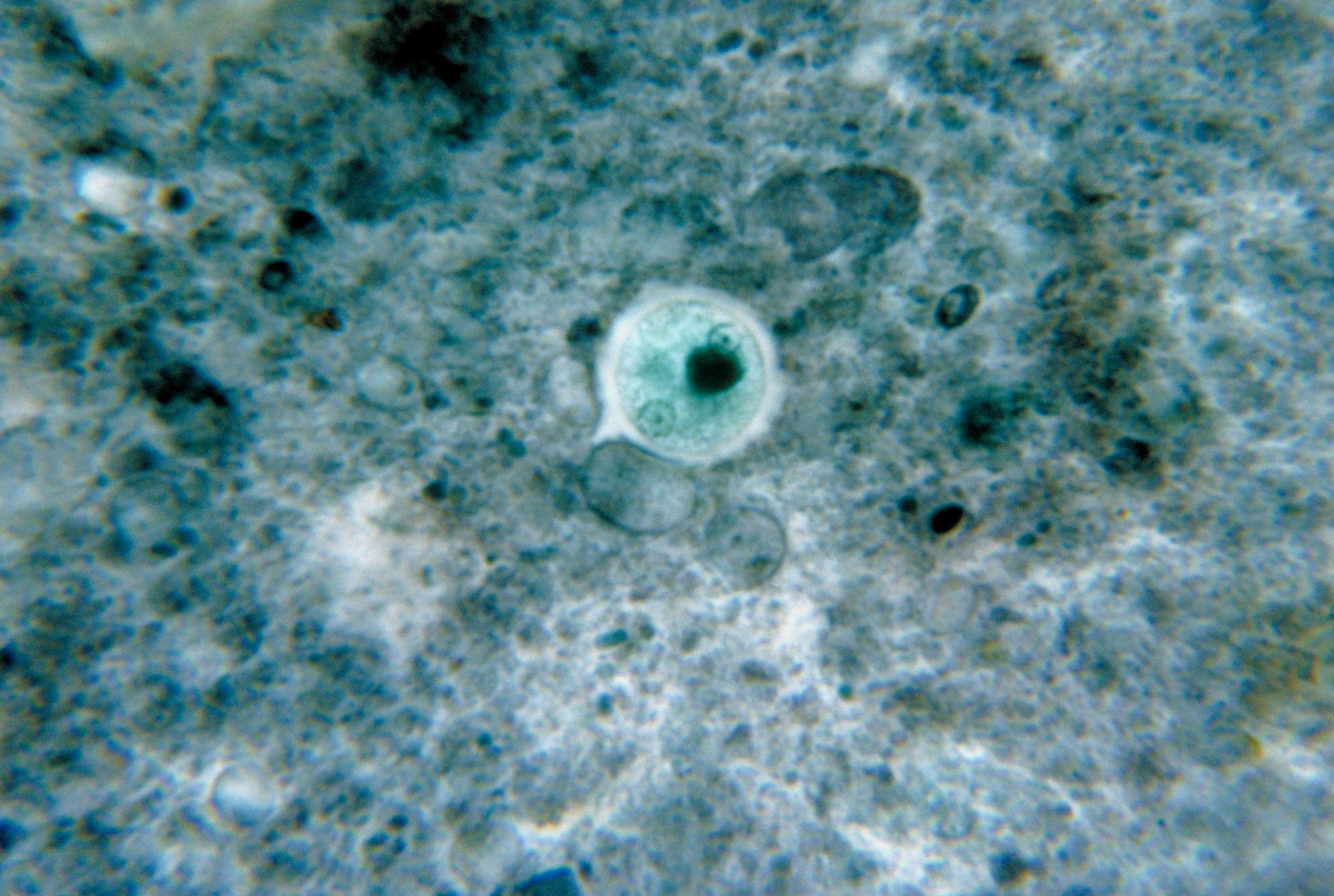What is Amoebiasis: Symptoms, Causes, Transmission, Treatments for a Common Diseases in India
 |
| Amoebiasis Symptoms. Photo: thehealthsite.com |
Amoebiasis is a condition in which your gut (intestines) becomes infected with the parasite E. histolytica. Entamoeba is a group of single-celled parasites (living things that live in, or on, other living organisms) that can infect both humans and some animals. There are at least six species of entamoeba that can infect the human gut but only E. histolytica causes disease.
E. histolytica is an amoeba. An amoeba is a name given to any single-celled microscopic animal with a jelly-like consistency and an irregular, constantly changing shape. Amoebae are found in water, soil, and other damp environments. They move and feed by means of flowing extensions of their body, called pseudopodia. Amoebae are types of germs (protozoa). Protozoa is a more general name for microscopic, single-celled organisms. Some protozoa, including E. histolytica, are important parasites of humans.
Amoebiasis Symptoms
The clinical spectrum ranges from asymptomatic infection, diarrhea, and dysentery to fulminant colitis and peritonitis as well as extra-intestinal amoebiasis.
Acute amoebiasis can present as diarrhea or dysentery with frequent, small, and often bloody stools.
Chronic amoebiasis can present with gastrointestinal symptoms plus fatigue, weight loss, and occasional fever.
Extra-intestinal amoebiasis can occur if the parasite spreads to other organs, most commonly the liver where it causes an amoebic liver abscess. Amoebic liver abscess presents with fever and right upper quadrant abdominal pain.
Other organs can also be involved, including pleuropulmonary, cardiac, cerebral, renal, genitourinary, peritoneal, and cutaneous sites. In developed countries, amebiasis primarily affects migrants from and travelers to endemic regions, men who have sex with men, and immunosuppressed or institutionalized individuals.
Causes of Amoebiasis
Amoebiasis is caused by the parasite Entamoeba histolytica. Several protozoan species in the genus Entamoeba colonize humans, but not all of them are associated with the disease. It exists in two forms- Vegetative (trophozoite) and cystic forms (cyst). Trophozoites multiply and encyst in the colon. The cysts are excreted in stool and are infective to humans. Cysts remain viable and infective for several days in feces, water, sewage, and soil in the presence of moisture and low temperature.
Transmission occurs via:
- The fecal-oral route, either directly by person-to-person contact or indirectly by eating or drinking fecally contaminated food or water.
- Sexual transmission by oral-rectal contact is also recognized especially among male homosexuals.
- Vectors such as flies, cockroaches, and rodents can also transmit the infection.
The incubation period for E. histolytica infection is commonly 2-4 weeks but may range from a few days to years.
The use of night soil for agricultural purposes favors the spread of the disease. Epidemic/ outbreaks (occurrence of more cases of a disease than would be expected in a community or region during a given time period) are usually associated with sewage seepage into the water supply.
Transmission of Amoebiasis
 |
| Entamoeba histolytica. Photo: Wikipedia |
According to Healthline, Amoebiasis is usually transmitted by the fecal-oral route, but it can also be transmitted indirectly through contact with dirty hands or objects as well as by anal-oral contact. Infection is spread through ingestion of the cyst form of the parasite, a semi-dormant and hardy structure found in feces. Any non-encysted amoebae, or trophozoites, die quickly after leaving the body but may also be present in stool: these are rarely the source of new infections. Since amoebiasis is transmitted through contaminated food and water, it is often endemic in regions of the world with limited modern sanitation systems, including México, Central America, western South America, South Asia, and western and southern Africa.
Amoebic dysentery is one form of traveler's diarrhea, although most traveler's diarrhea is bacterial or viral in origin.
Amoebiasis Treatments
Treatment for uncomplicated cases of amebiasis generally consists of a 10-day course of metronidazole (Flagyl) that you take as a capsule, reported patient.info. Your doctor may also prescribe medication to control nausea if you need it.
If the parasite is present in your intestinal tissues, the treatment must address not only the organism but also any damage to your infected organs. Surgery may be necessary if the colon or peritoneal tissues have perforations.
Amoebiasis Prevention
 |
| Improved water supply to prevent Amoebiasis. Photo: alongtheearth.com |
Amoebiasis can be prevented and controlled both by non-specific and specific measures, according to NHP India.
Non-specific measures are concerned with-
- Improved water supply- The cysts are not killed by chlorine in the amount used for water disinfection. Water filtration and boiling are more effective than chemical treatment of water against amoebiasis.
- Sanitation-Safe disposal of human excreta coupled with the sanitary practice of washing hands after defecation and always before handling and consuming food.
- Food safety- Uncooked fruits and vegetables should be washed thoroughly with safe water, peel fruits, and boil vegetables prior to eating. Measures should also include the protection of food and drink from flies and cockroaches and the control of these insects. Carriers, who pass cysts and are involved in handling food, whether at home, at street stalls, or in catering establishments, should be actively detected and treated since they are major transmitters of amoebiasis.
- Health education of the public as well as health personnel at all levels about sanitation and food hygiene-Elementary hygienic practices should be propagated and constantly reinforced in schools, health care units, and the home through periodic campaigns using the mass media.
- General social and economic development-The implementation of individual and community preventive measures (e.g., washing of hands, proper excreta disposal) should be an essential part of these activities.
Specific measures that should be undertaken when possible are-
- community surveys to monitor the local epidemiological situation with regard to amoebiasis;
- improvement of case management, i.e., rapid diagnosis and adequate treatment of patients with invasive amoebiasis at all levels of the health services, including the community and health center levels;
- surveillance and control of situations that may encourage the further spread of amoebiasis, e.g., refugee camps, contaminated public water sources.
Amoebiasis in IndiaAmoebiasis affects about 15% of the Indian population. It has been reported throughout India. Sporadic studies of Department of Biotechnology, Assam University, Silchar, India have been performed in India, Microscopy-based prevalence rates of 14.8%, 42.0%, and 21.8% were also recorded respectively from Karnataka, Himachal Pradesh, and Tamil Nadu. Mukherjee et al. reported a prevalence rate of 3.6% using direct microscopy, PCR, and ELISA amongst the diarrhoeal patients in Kolkata. Prakash et al. compared PCR assay and microscopy of stool samples from patients with intestinal and ALA cases. Riboprinting of rRNA genes from amoeba has also been used45. Srivastava et al.25 using PCR assay reported a prevalence rate of 8.8% among volunteers, residing in a New Delhi slum. In addition to being a potentially lethal disease, invasive amoebiasis has important social and economic consequences. Temporarily incapacitating infections, which are frequent in adult males in the wage-earning age group, may require several weeks of hospitalization and 2-3 months for a full recovery. Amoebiasis may cause clinical problems in persons with immunodeficiency, homosexuals, and immigrants from certain tropical countries, and travelers. |
 Top 10 Most Common Diseases in India Top 10 Most Common Diseases in India Despite being the 5th largest economy in the world, some areas of India still face with shortage of purified water, poverty and other necessities that ... |
 Hookworm Infection: Symptoms, Causes, Transmission, Treatments for a Common Diseases in India Hookworm Infection: Symptoms, Causes, Transmission, Treatments for a Common Diseases in India Hookworm infection is an infection of the intestines that can cause an itchy rash, respiratory and gastrointestinal problems, and eventually iron deficiency anemia due to ... |
 Filariasis: Symptoms, Causes, Transmission, Treatments of a Common Diseases in India Filariasis: Symptoms, Causes, Transmission, Treatments of a Common Diseases in India Filariasis is caused by several round, coiled and thread-like parasitic worms that belong to the family filaria. These parasites penetrate the skin either on their ... |


























